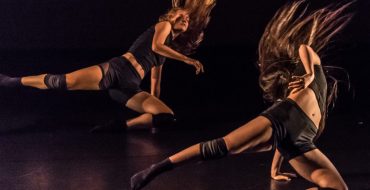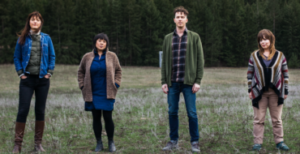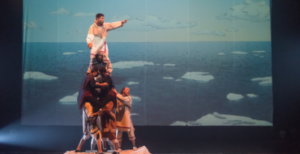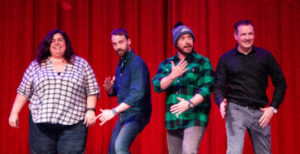“Pathways” is the latest work from the acclaimed choreographer, Noam Gagnon. Vision Impure, Gagnon’s dance company, performed the piece for four nights (Mar. 20-23) at the Vancouver International Dance Festival.
“Pathways” attempts to dissect our capacity to connect with one another in urbanized spaces. The work was choreographed in a way that showed the repetitive and emotionally taxing moments of our daily lives and the infrequent, yet subtle interactions we have with each other in the process. It then staggered these moments with sincere flashes of connection and hints of reciprocity.
At several points within the show, dancers would burst into maniacal laughter, push and shove one another across the floor and then continue with the choreography as if nothing happened. It’s a scene that left the audience both amused, uncomfortable and possibly reflective of their own urban lives.
The idea of human connection, however, is not a groundbreaking concept. It has been touched on countless times in other performance works. While most choreographers might approach this notion with slow, methodical movements that express isolation and a yearning for companionship, Gagnon choreographed “Pathways” to consist of quick, sharp and angular gestures to represent the almost robotic nature of people in metropolitan cities.
Overall, these types of movements worked well. However, moments that contrasted this aesthetic were rare. Swift choreography benefits from incorporating notable changes to speed and quality. It creates a balance and more poignant elements of surprise. When those more notable moments did appear, it was thrilling to watch. Then, they’d get lost again in the crowd of explosive choreography.
The music, composed by Stefan Nazarevich, was equally as explosive. But, sometimes the music would intensify, and the choreography would not. Instead, it would remain uniform and unchanged thereby allowing the excitement to feel forced. It’s a major criticism for a work that depended too heavily on dynamism.
High praise, however, goes to the impressive dancers.
It takes an incredible amount of technical proficiency and breath control to pull off such a physically demanding work of art.
Despite the sharpness of each movement, their fluidity was boundless with each action continuing easefully into the next. More importantly, this flow was neither disrupted by the high energy jumps nor the frequent direction changes.
Many dancers even performed with their hair down – nearly blinding their vision. It was a bold and deliberate choice that allowed their hair to not only act as an extension of their body but to give the illusion of controlled yet dishevelled madness. An obvious testament to the burnout we have all experienced.
With that said, “Pathways” is an evocative performance that requires a little more editing. Regardless, its themes are and always will be relevant to the current cultural climate, thereby demonstrating that Gagnon is still one of the most perceptive choreographers of our time.









